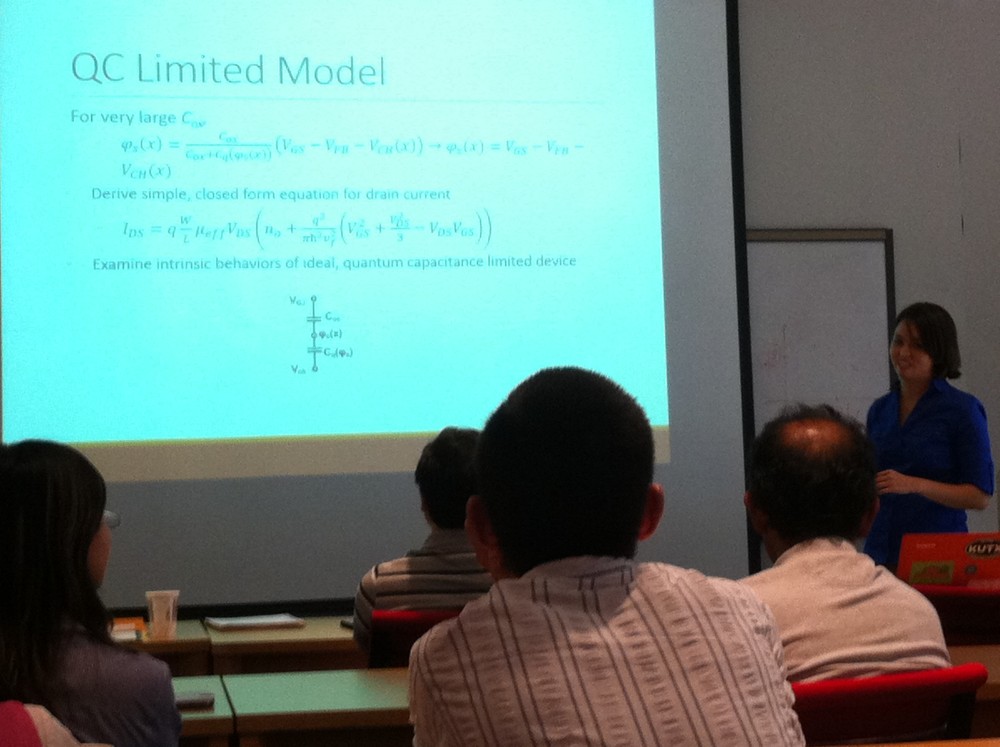Drs Sherry Chang, Nassibe Rahimi and Sk. Fahad Chowdhury graduated with PhD degrees in electrical and computer engineering this Summer 2015.
Sherry’s thesis topic was
“Device Physics and Device Mechanics for Flexible MoS2 Thin Film Transistors”.
Nassibe’s thesis topic was
“Graphene and MoS2 Devices for Wafer-Scale Integrated Silicon Nanotechnology”.
Fahad’s thesis topic was
“Design, Fabrication and Characterization of Field-Effect Transistors Based on Two-Dimensional Materials and Their Circuit Applications”.
Congratulations and we wish you all the best in your personal and professional development.

 Dr. Parrish defending her Ph.D dissertation. Good luck for your future endeavors at Texas Instruments Kilby Lab
Dr. Parrish defending her Ph.D dissertation. Good luck for your future endeavors at Texas Instruments Kilby Lab SPIE Newsroom publishes Prof. Akinwande’s article, entitled “
SPIE Newsroom publishes Prof. Akinwande’s article, entitled “